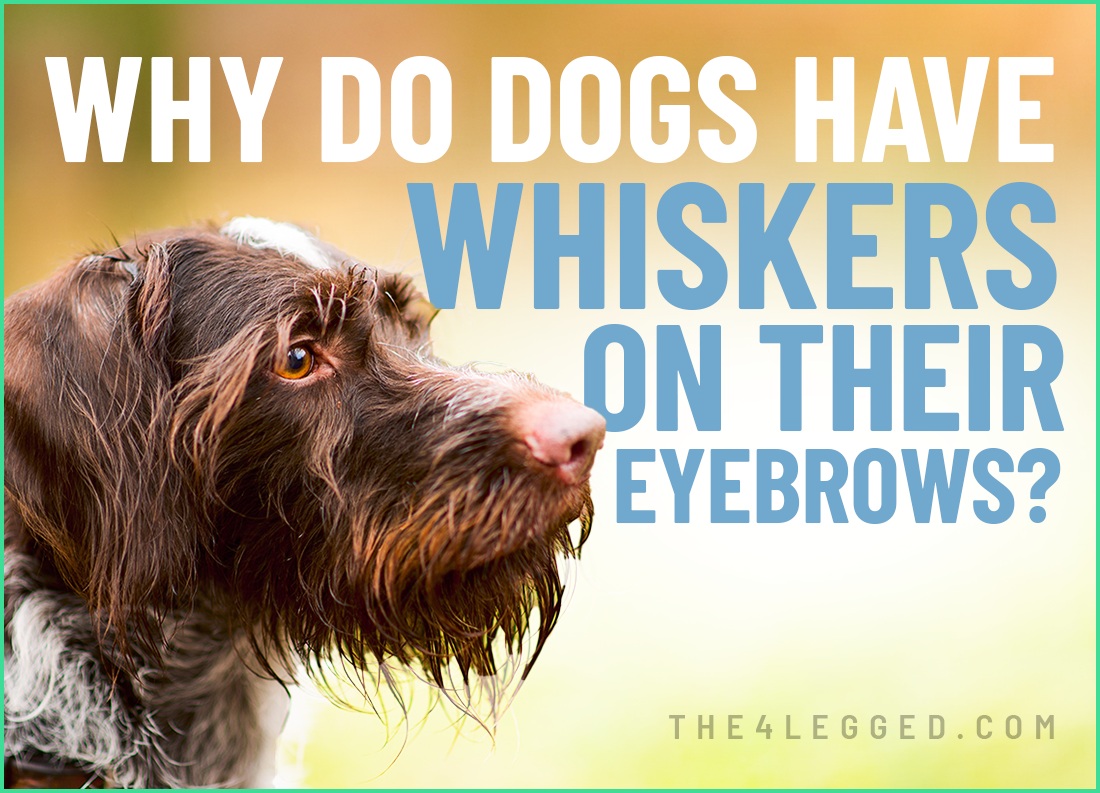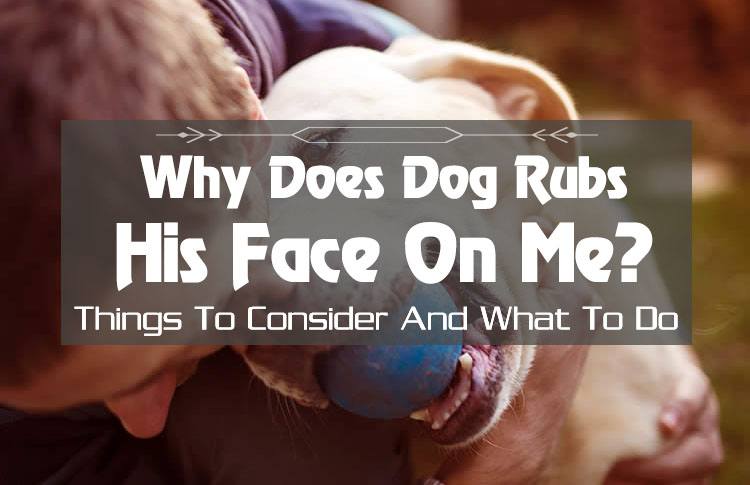Dogs have whiskers on their eyebrows, known as supraciliary whiskers, for important sensory and protective reasons. So, why do dogs have whiskers on their eyebrows specifically? These specialized tactile hairs help dogs detect nearby objects and potential threats, especially close to their eyes, triggering protective reflexes like blinking to keep their eyes safe from injury. Beyond protection, eyebrow whiskers are vital for spatial awareness, allowing dogs to navigate their environment confidently by sensing subtle changes in air currents and nearby obstacles. This combination of sensory input and reflexive action makes eyebrow whiskers indispensable for a dog’s well-being and daily functioning.
Key Takeaways
- Dog whiskers, or vibrissae, are essential sensory tools that help dogs navigate their environment by detecting obstacles and measuring distances.
- Eyebrow whiskers protect a dog’s eyes by triggering a blink reflex when sensing approaching objects, preventing potential injuries.
- Trimming a dog’s whiskers is not recommended, as it can impair their spatial awareness and lead to confusion, affecting their overall well-being.
The Role of Eyebrow Whiskers in Dogs
Domestic dogs, like other mammals, rely on specialized whiskers for navigation and environmental awareness. Dog whiskers, also known as vibrissae, are highly sensitive sensory tools that play a crucial role in helping dogs understand their surroundings. These specialized hairs, including tactile hairs, are found not just above the eyes but also on the muzzle, cheeks, and dog’s chin, including cheek whiskers. Whiskers develop as some of the first hairs in newborn pups, helping them find their mother’s nipples and navigate before their eyes open. According to the American Kennel Club, whiskers are essential for the sensory perception and navigation of domestic dogs.
Whiskers pick up subtle vibrations in the air as dogs move and allow dogs to perceive obstacles and navigate their environment with ease. Dogs whiskers are essential for their spatial awareness. The hair follicles of whiskers are larger and more deeply rooted than those of regular hairs, containing more nerve endings, which contributes to their heightened sensitivity.
Whiskers assist dogs in several ways:
- Gauge the dimensions of spaces, preventing them from getting stuck in tight spots, especially important for breeds with larger heads or those that explore under furniture and in narrow spaces.
- Detect air currents.
- Gather information about nearby surfaces, which is essential for daily navigation, including the role of genal whiskers.
The sensory data transmitted by whiskers is vital for dogs, as nearly 40% of their dog’s brain sensory cortex is dedicated to interpreting this information, including nerve impulses. Blood vessels in the whisker follicles deliver nutrients and help transmit sensory signals to the brain. This means that whiskers play a vital role in sending signals about how dogs perceive the world around them, contributing significantly to their ability to move confidently and safely in various environments.
Protecting the Eyes
The specialized hairs that grow above a dog’s eyes are called Supraciliary Whiskers, and they serve a critical role in protecting the eyes. The anatomy of a dog’s face, including the upper lip, is designed to maximize the protective and sensory functions of whiskers. These whiskers are incredibly sensitive to touch and can detect the slightest changes in the environment. When they sense potential threats, such as approaching objects or particles, they trigger the dog’s blink reflex, helping to shield the eyes from harm. In addition to the area above the eyes, the upper lip is another region where important vibrissae are found, further enhancing a dog’s sensory perception.
Eyebrow whiskers are particularly important for detecting potential threats and preventing injuries to the face and dogs eyes. For instance, if a dog is running through tall grass or playing with other dogs, the eyebrow whiskers can sense when something is getting too close to the eyes and prompt a protective blink. This reflex action is crucial for maintaining the health and safety of a dog’s eyes in various situations.
Dogs faces, with their prominent whiskers, play a key role in how dogs interact with their environment and communicate. Whiskers also play a broader role in protecting the dog’s face from injuries. Whiskers provide an early warning system, helping dogs avoid sharp branches during a walk or other objects during playtime, ensuring safer navigation.
Communicating Emotions through Whiskers
Whiskers are not only functional but also expressive. They can indicate a dog’s emotions, such as happiness, anxiety, or excitement. When dogs are anxious, their muzzle whiskers may flare or twitch, indicating discomfort or nervousness. This subtle movement helps owners understand their dog’s emotional state and respond accordingly.
When dogs are excited or content, they may raise their supraorbital whiskers above their eyes. This happy expression is often accompanied by other signs of joy, such as a wagging tail or playful behavior. Recognizing these whisker movements helps owners interpret their dog’s feelings and strengthen their bond.
Whiskers are essential for dogs’ sense of their environment and emotions, helping them communicate non-verbally with humans and other animals. In essence, whiskers serve as a form of non-verbal communication, allowing dogs to express their emotions in ways that are often overlooked, conveying emotions that dog owners can gain valuable insights into their pet’s emotional well-being and respond in ways that enhance their overall happiness.
Sensory Perception and Environmental Awareness
Whiskers are indispensable for a dog’s sensory perception and environmental awareness. Unlike humans, who lack such specialized sensory hairs, dogs rely on whiskers to detect the size, shape, and speed of nearby objects through changes in air currents, providing vital sensory information for navigating their surroundings. Detecting objects and measuring distances is crucial for dogs, especially in low-light conditions where their vision is less effective.
Whiskers are structurally and functionally distinct from regular hairs. While regular hairs primarily serve as insulation and protection, whiskers are specialized, more sensitive structures that develop prior to or alongside regular hairs and are designed specifically for sensory input.
When a dog’s whiskers encounter an object, it often triggers a blink reflex, helping to keep harmful particles away from their eyes. This automatic response is part of the whiskers’ role in protecting the eyes and ensuring that dogs can move safely through their environment without risking injury.
Veterinarians emphasize the importance of not trimming dog whiskers, as they are vital for sensory perception. Touch-sensitive neurons in whiskers relay sensations directly to the dog’s brain, essential for interpreting the environment and reacting to changes. Removing whiskers can significantly impair a dog’s ability to navigate and interact with their surroundings.
Overall, whiskers provide sensory and tactile information that is crucial for a dog’s normal field of perception. They help dogs detect objects, measure distances, and stay aware of their environment, ensuring safety and well-being.
Differences between Dog and Cat Whiskers
Whiskers, known as vibrissae or feelers, serve the same sensory role in both dogs and cats, aiding them in navigating their environment. However, there are some differences in their placement and function between these two species. For instance, while dogs have whiskers above their eyes, next to their nose, and interramal whiskers under their chin—which help detect food and water outside the dog’s direct line of sight—cats also have additional whiskers on the back of their forelegs.
Despite these differences, all dogs have whiskers, just like all cats, highlighting the consistency of this feature across species. Even hairless breeds possess whiskers, which are vital for sensory perception regardless of fur type. Whether it’s helping a dog navigate through tight spaces or assisting a cat in hunting, whiskers are an essential part of both animals’ sensory systems.
Recognizing these similarities and differences helps pet owners appreciate how their pup uniquely interacts with the world and the breed.
While whisker placement and function vary between dogs and cats, their primary role as sensory tools remains the same. These specialized hairs, including mystacial whiskers, are crucial for both species, helping them navigate their environments and stay safe.
Should You Trim Your Dog’s Whiskers?
Trimming a dog’s whiskers accidentally is generally not recommended. From an animal welfare perspective, trimming or plucking whiskers is considered harmful and may even be legally banned in some places due to the negative welfare impacts and ethical concerns. Whiskers are crucial for understanding surroundings and sensing direction, and cutting them can cause confusion and impair a dog’s navigation ability. Whiskers provide critical sensory feedback that helps dogs measure distances and detect obstacles.
Trimming whiskers can cause temporary disruption in a dog’s sensory perception and behavior until the whiskers regrow. This can affect a dog’s spatial awareness, leading to potential safety risks. Dogs may become more anxious or stressed if their whiskers are cut, affecting their emotional well-being. For example, a dog with trimmed whiskers might misjudge doorways or bump into objects, causing unnecessary stress and disorientation.
Though not life-threatening, trimming whiskers can significantly impact a dog’s overall well-being. Avoid cutting dog whiskers and appreciate their role in helping dogs navigate their world safely and confidently.
Do Dog Whiskers Fall Out Naturally?
Yes, dog whiskers fall out naturally as part of the shedding process. Similar to regular hair, dog whiskers shed and regrow over time. After an old whisker falls out, it may take several weeks for dog whiskers to grow back. The duration of this process can vary. This natural cycle ensures dogs always have functional whiskers for navigating their environment. Whisker and hair loss can affect not just the face but other parts of the dog’s body, including the head and trunk.
In newborn pups, whiskers are among the first hairs to develop, helping them sense their environment and locate their mother’s nipples for nursing, which aids in early survival.
However, if a dog experiences excessive whisker loss, it could signal potential health issues such as:
- Hormonal imbalance
- Skin conditions
- Skin infections (such as ringworm or parasitic infections, which can damage or cause shedding of whiskers and hair)
- Autoimmune diseases like alopecia areata (which can cause loss of hair, eyelashes, and whiskers)
- Dental problems
Consult a veterinarian to rule out any underlying health problems in such cases, as excessive whisker shedding may require professional evaluation and treatment involving the whisker follicle.
While normal for dog whiskers to fall out and regrow, monitor any unusual loss to ensure the dog’s health and well-being.
How to Care for Your Dog’s Whiskers
Healthy whiskers are crucial for your dog’s overall well-being. A balanced diet rich in vitamins and minerals supports the health of whiskers. Proper nutrition can prevent brittle whiskers and promote natural growth.
It’s important to avoid trimming your dog’s whiskers, as this can lead to confusion and disorientation. Key points to consider include:
- Cutting whiskers can feel like an amputation for dogs, affecting their ability to sense and navigate surroundings.
- Be cautious during playtime, as rough activities can break whiskers.
- A safe environment helps prevent injuries and keeps your dog’s whiskers intact.
- If muzzles are used during grooming or medical care, ensure they are applied appropriately to avoid stress and protect your dog’s whiskers.
Whiskers may shed naturally and typically regrow unless there are underlying health concerns. Monitor your dog’s whiskers and watch for excessive loss to catch potential health issues early, ensuring your pet remains happy and healthy.
Summary
Understanding the importance of dog whiskers can greatly enhance how we care for our furry friends. From aiding in navigation and protecting the eyes to conveying emotions, whiskers are indispensable sensory tools that play a vital role in a dog’s everyday life. Ensuring that these specialized hairs remain healthy and intact is crucial for the overall well-being of our pets.
Appreciating the wonders of dog whiskers not only helps us become better pet owners but also deepens the bond we share with our dogs. Want to keep your dog healthy and happy? Check out our full range of dog-care and behavior guides to learn more practical tips and deepen the bond with your furry friend.
Frequently Asked Questions
Why do dogs have whiskers above their eyes?
Dogs have whiskers above their eyes to help protect them by sensing nearby objects and potential threats, which triggers their blink reflex. It’s just one of the many ways they stay safe and aware of their surroundings!
Can I trim my dog’s whiskers?
It’s best to avoid trimming your dog’s whiskers because they’re crucial for helping them navigate their environment. Cutting them can cause confusion and stress for your furry friend.
Do dog whiskers fall out naturally?
Absolutely, dog whiskers do fall out naturally and will usually regrow in just a few weeks. It’s a normal part of their shedding cycle!
How can I care for my dog’s whiskers?
To care for your dog’s whiskers, just make sure they’re getting a balanced diet and avoid trimming them. Be mindful during playtime to keep those delicate whiskers safe!
Are dog whiskers similar to cat whiskers?
Dog whiskers and cat whiskers are indeed similar in that they both serve as sensory tools, but cats have whiskers on their forelegs, adding to their sensory capabilities. So, while they share a purpose, there are some unique features that set them apart.




